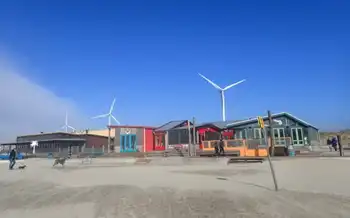American Companies Educate About Clean Energy
AUSTIN -- - The American Lung Association of Texas and Green Mountain Energy Company announced that they have joined forces to educate Texans about renewable, wind-generated electricity service in the Lone Star State.
Through the partnership, Green Mountain Energy Company will make a donation to the American Lung Association of Texas for each of its members that signs up for Green Mountain Energy(R) electricity service through the program. The program will reach out to members to educate them about the benefits of renewable energy and let them know that they can sign up for 100 per cent pollution-free wind electricity.
"This is a unique opportunity for our donors to show their support for cleaner resources while also supporting the American Lung Association of Texas," said Ed Carter, president and CEO, American Lung Association of Texas. "While laws and regulations are vital to help control the sources of our nation's air pollution, we believe that direct action on the part of consumers will ultimately have a powerful effect on the way electricity is generated in the future."
Electric power generation is the dirtiest industry in America in terms of air pollution. Each year in the U.S., more than 25 million tons of nitrogen oxide pollution are emitted -- the equivalent of 480 pounds per U.S. household. Making electricity alone causes 23 per cent of these emissions. This pollution contributes to acid rain, smog, asthma, and respiratory illness.
"Today, over a third of the electricity generated in Texas comes from coal and less than one per cent comes from clean, renewable sources like the wind," said Gillan Taddune, president of the Texas region for Green Mountain Energy Company. "Unfortunately, many people still are not aware of this. That's why Green Mountain Energy Company is proud to join forces with the American Lung Association of Texas. Together, we will educate Texans about renewable energy and sign them up for clean energy."
Related News

As New Zealand gets serious about climate change, can electricity replace fossil fuels in time?
WELLINGTON - New Zealand Energy Transition will electrify transport and industry with renewables, grid-scale solar, wind farms, geothermal, batteries, demand response, pumped hydro, and transmission upgrades to manage dry-year risk and winter peak loads.
Key Points
A shift to renewables and smart demand to decarbonise transport and industry while ensuring reliable, affordable power.
✅ Electrifies transport and industrial heat with renewables
✅ Uses demand response, batteries, and pumped hydro for resilience
✅ Targets 99%+ renewable supply, managing dry-year and peak loads
As fossil fuels are phased out over the coming decades, the Climate Change Commission (CCC) suggests electricity…




